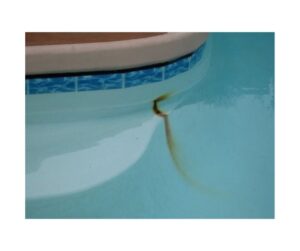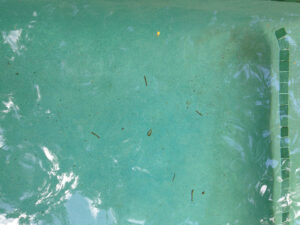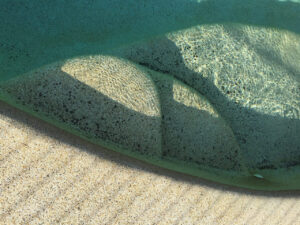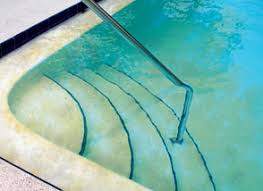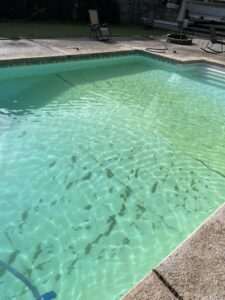Pool Stains and Algae Treatments
Pool Stains and Algae Treatments.
General stains
Stains are either organic (e.g. debris) or inorganic (e.g. metals). Don’t know what they are caused from?, then simply add some stabilised granular chlorine to an area and see what happens. If the stain lifts, then it is organic, so keep using chlorine. If it does not lift then use something like LoChlor’s “Salt Stain Remover”. The reason LoChlor developed this product is because cheap salt has high impurities that can stain your pool. The salt may be cheap but the stain remover is not.
Black Stains
These are normally caused by an excessive amount of copper in the water. This may be from an Algaecide or from an ioniser. This requires a specialised treatment, so we recommend taking a water sample and some photos to your local pool professional. The treatment for this is different to blackspot algae (see below).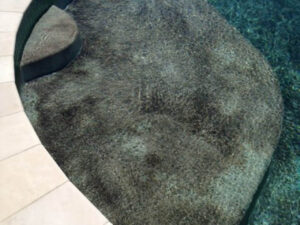
Rust stains
Do you have rust stains on the walls of your pebble (concrete) pool that look like a sun burst? If it’s dark brown/red in the centre and fades outwards, then it will be Reo rust. It means that water has made it’s way through to the steel reinforcing bars within the concrete shell of the pool. Usually because the steel is not deep enough within the shell of the pool. Do NOT waste your money on miracle “Stain Busters”, they will at best fade the stain, but they will NOT remove it! The only way is to have a professional drain the pool, dig out the rusted section of steel and seal the area. Then comes the tricky part of trying to match the patch with the rest of the pool surface. If this is not done properly, then the rust WILL come back.
If the rust stain is on the floor and looks like the shape of something that has sat there, then yes, that can be treated with stain removers. You may have a bunch of little red/brown spots, like freckles. This is usually from somebody grinding metal near the pool, and can also be from larger metal items such as nails, bobby pins, and hair clips.
The best metal stain remover we have ever come across is LoChlor’s “Salt Stain Remover”. You can simply add it to the pool water or for stubborn stains on the floor, simply add some to a filter Sock or pantyhose and sit it on the stain. For stains on the walls, like around eye ball returns, tie a string to the sock and dangle it over the edge of the pool.
Black Spot Algae
This type of algae is fairly common in pebble pools especially. It has roots and buries itself into the concrete surface. You will NOT find Black Spot Algae in a fibreglass, or vinyl liner pool because it has nowhere to attach itself to. Black spots in fibreglass or vinyl pools can be caused by osmosis, in which case bring a photo and water sample to your local pool specialist.
If it’s on the floor or steps then use LoChlor Granular Black Spot Remover. Just on the walls then use LoChlor Black Spot Algaecide. If it’s on both, then use both. The trick is to scrub it. Not to remove it, but to break away the waxy membrane and let the chemicals do the work. Scrubbing weekly until they are under control is recommended.
Mustard Algae
This is an airborne, stubborn, chlorine resistant type of Algae that can be difficult to remove. Bombing it with chlorine alone does not work. It doesn’t colour and cloud the water like green algae – instead it will look like dirt or sediment on the bottom of the pool.
It’s a characteristic mustard yellow colour, but sometimes it clumps together and the colour can look more brown. To tell if it’s truly mustard algae, sweep it up; dirt or sediment will come up and cloud the pool whereas mustard algae tends to disappear into the water, only to return some hours or days later. There is a particular combination of chemicals that we have developed to deal with this situation, which is outlined on the Free Advice page.
Go to the Products page HERE.
Go to the LoChlor website HERE.
Pool Stains and Algae Treatments.
